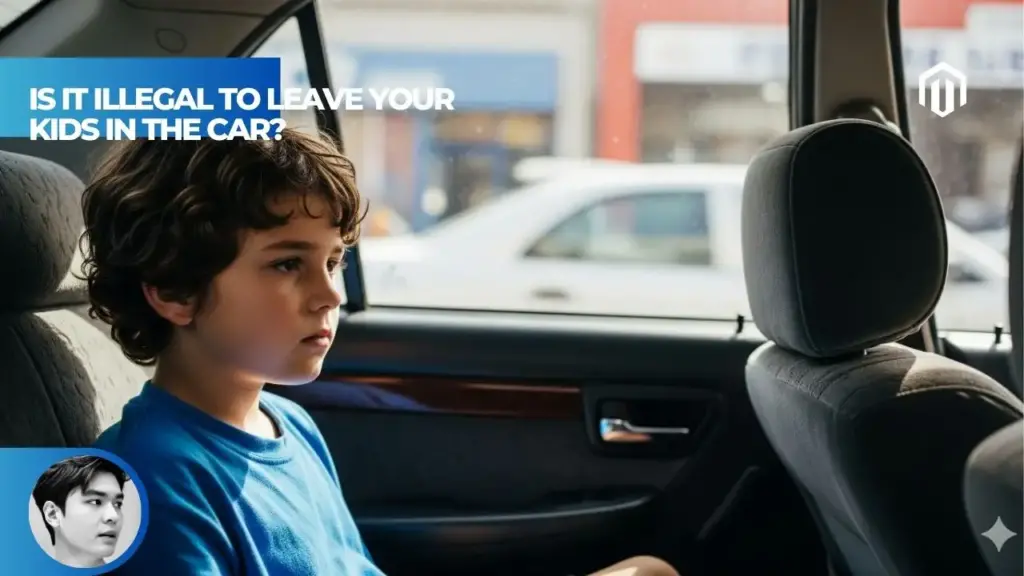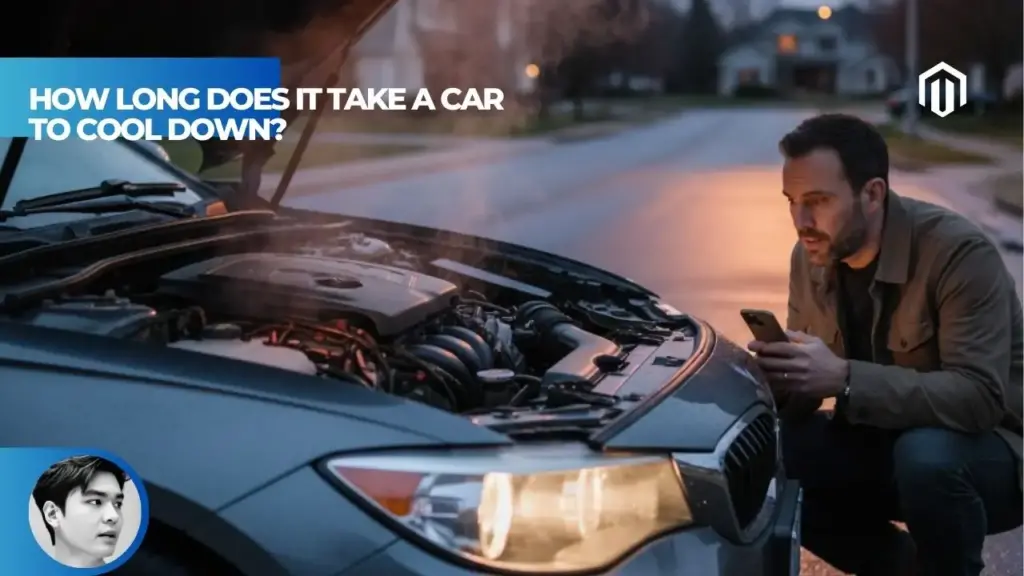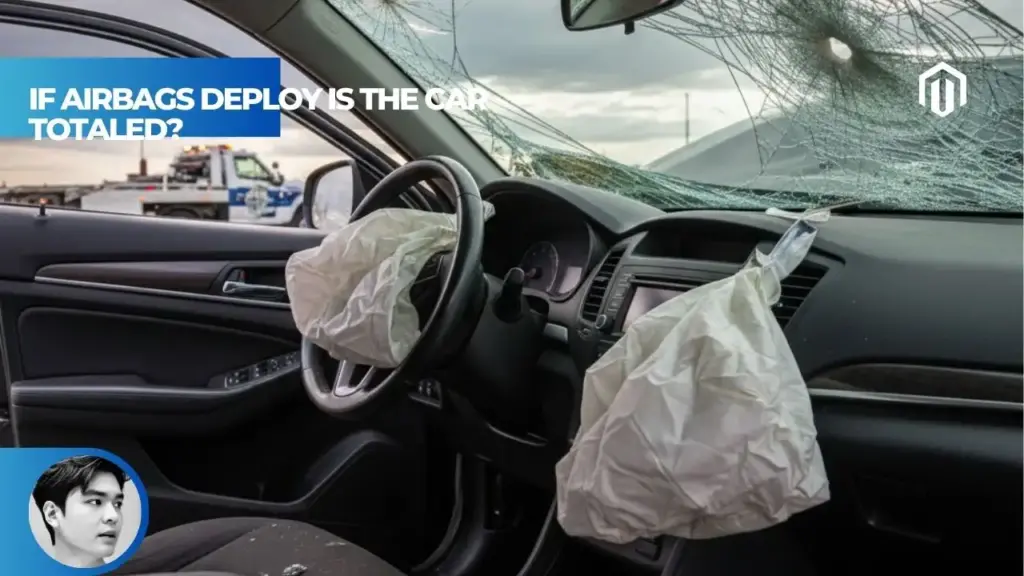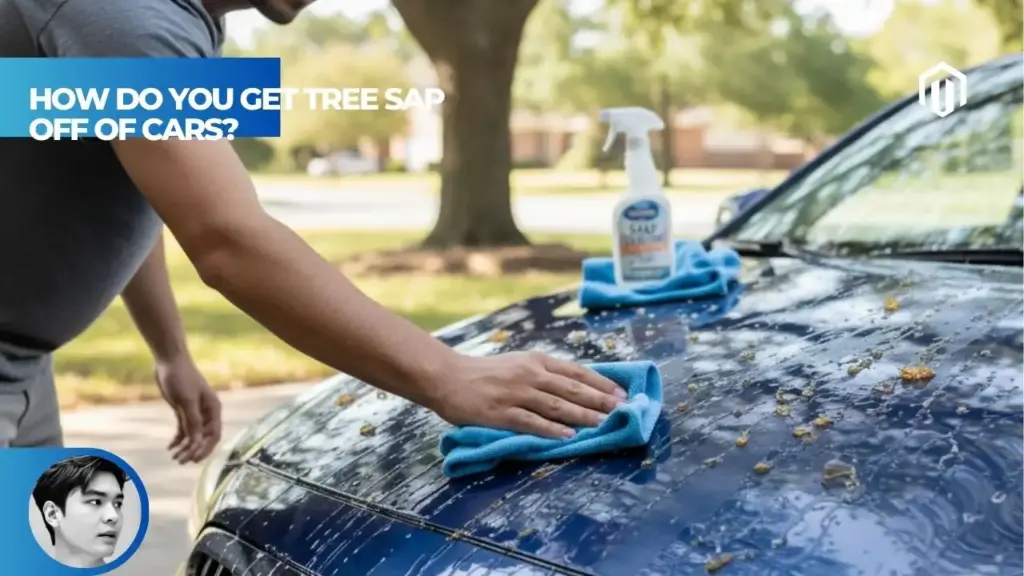You may also like:
- 【Explained】When Does the 2-Hour Car Seat Rule End for Babies?
- 【Explained】What Happens When Your Car Is Totaled But Still Drivable?
- 【Explained】Can a Police Officer Search Your Car Without a Warrant? (The 5 Legal Exceptions)
- 【Explained】Can You Jump Start a Car in the Rain? (A Step-by-Step Guide)
- 【Explained】How to Fix Car AC Blowing Hot Air? DIY Troubleshooting Guide
Yes, it is illegal to leave children unattended in vehicles in 21 U.S. states with specific laws, while the remaining states can prosecute under general child endangerment statutes. Age limits typically range from under 6 to under 12 years old, with time restrictions of 5-15 minutes, though safety experts unanimously recommend never leaving any child alone in a car due to rapid temperature changes that can cause death within minutes.
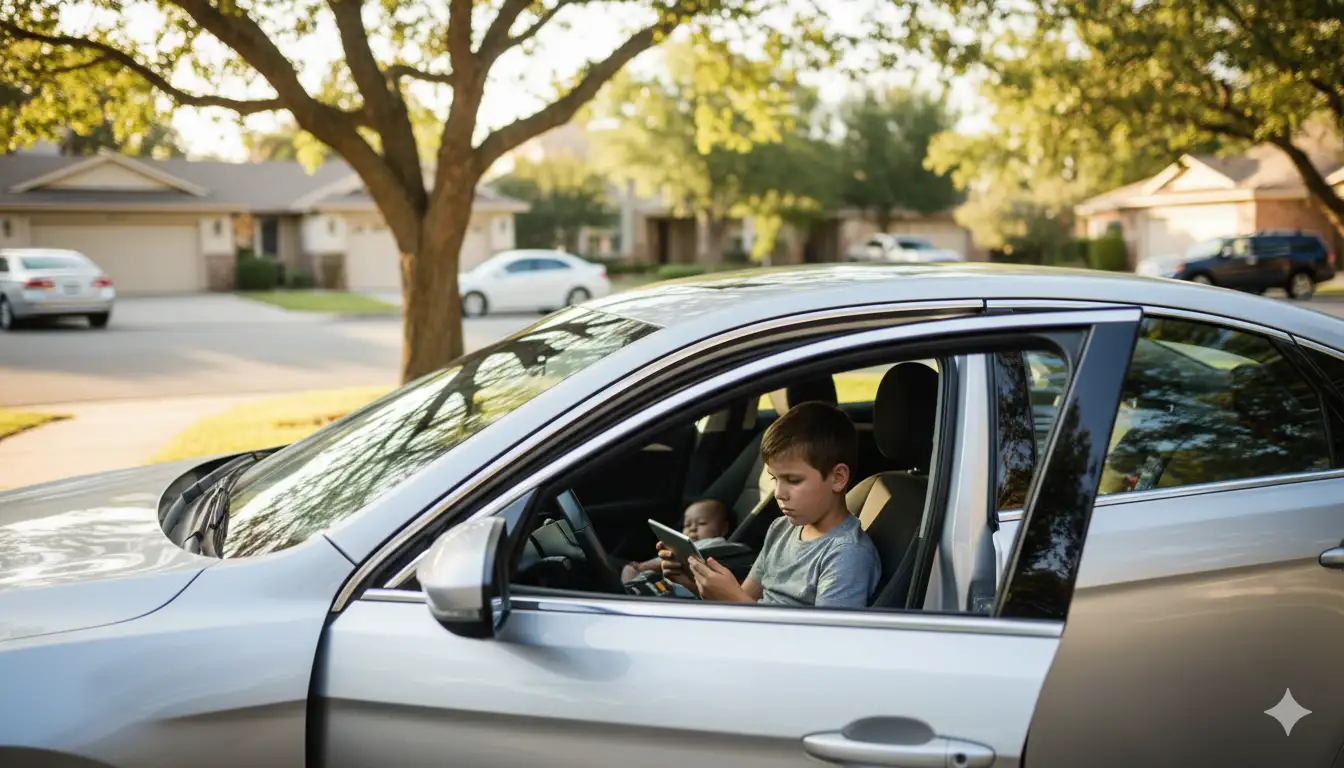
State Laws Leaving Child Unattended in Car Age Limit
The legal landscape surrounding children left in vehicles varies dramatically across the United States. Currently, only 21 states have enacted specific legislation addressing unattended children in vehicles, leaving a patchwork of regulations that parents must navigate[1]. Understanding your state’s specific requirements is crucial to avoid both legal consequences and tragic outcomes.
Legal Age to Leave Child Alone in Car by State
State laws differ significantly regarding the minimum age at which children can be left unattended in vehicles. California prohibits leaving children under 6 years old unattended when conditions pose significant risk, while Illinois sets the limit at under 10 years old[2]. Some states like Tennessee specify that children under 9 cannot be left alone for more than 10 minutes.
Here’s a breakdown of age limits in states with specific laws:
| State | Age Limit | Time Restriction | Supervision Required |
|---|---|---|---|
| California | Under 6 | Any time if dangerous | 12+ years old |
| Illinois | Under 10 | Any duration | N/A |
| Florida | Under 6 | 15 minutes | N/A |
| Michigan | Under 6 | Any duration | 13+ years old |
| Nevada | Under 8 | Any time if dangerous | N/A |
States without specific laws can still prosecute under broader child endangerment statutes, making any situation deemed unsafe potentially illegal regardless of the child’s age.
Child in Car with Older Sibling Age Limit
Many states address supervision by older siblings in their statutes. California requires supervisors to be at least 12 years old, while Michigan mandates supervisors be 13 or older[2]. These age requirements recognize that young teenagers may not possess the judgment or ability to handle emergencies involving younger children.
Autvex safety experts note that even with older sibling supervision, risks remain significant. Older children may not recognize signs of heat distress or know how to respond if the younger child becomes ill. Additionally, the older child becomes responsible for any harm that occurs, potentially facing their own legal consequences.
Unattended in Vehicle vs Unsupervised Definitions
Legal terminology distinguishes between “unattended” and “unsupervised” in important ways. “Unattended” means no capable person is present in the vehicle, while “unsupervised” indicates no adult oversight regardless of location[3]. This distinction matters because some states allow brief periods where a child remains in sight of a parent, such as when paying for gas.
Washington state’s law specifically addresses vehicles with running engines, making it illegal to leave children under 16 unattended in running vehicles regardless of duration. This recognizes additional dangers beyond temperature, including carbon monoxide poisoning and vehicle theft with children inside.
Time Limits and Supervision Requirements
Time restrictions in state laws attempt to balance practical parenting needs with child safety, though experts argue any duration poses unacceptable risks. These limits vary widely and often depend on environmental conditions and the child’s age.
How Long Can You Legally Leave a Child in a Car
Legal time limits range from zero tolerance to 15 minutes, depending on state and circumstances[2]. Florida allows up to 15 minutes for children under 6, while states like Michigan prohibit any duration for the same age group. However, these time frames become irrelevant when conditions create immediate danger.
Temperature plays a crucial role in determining legality regardless of stated time limits. On an 80-degree day, car interiors reach 109°F within 20 minutes and can cause heatstroke in less time than most legal limits allow[4]. This reality makes even “legal” durations potentially fatal.
Time Limit for Leaving Kids in Car
Specific time restrictions often include conditional language about “reasonable” periods or “conditions presenting risk.” Tennessee’s 10-minute limit applies to children under 9, while Florida’s 15-minute allowance requires the vehicle not be running and conditions not pose health risks[2]. These nuanced requirements create confusion for parents trying to comply with the law.
Law enforcement officers consider multiple factors when evaluating time-based violations:
- Ambient temperature and weather conditions
- Whether windows are cracked or ventilation provided
- Child’s age and physical condition
- Proximity of parent and ability to observe
- Location safety (parking lot vs. residential street)
Leaving Baby Alone in Car for a Minute
Despite parental beliefs about “quick errands,” no duration is considered safe for infants[5]. Babies cannot regulate body temperature effectively, making them especially vulnerable to rapid temperature changes. Even one minute in a hot car begins the dangerous heating process that can quickly become fatal.
Real-world scenarios demonstrate how “just a minute” becomes tragedy. Parents report losing track of time in stores, encountering unexpected lines, or facing emergencies that extend brief absences. What begins as a 60-second plan to grab keys from a locksmith can escalate to life-threatening durations.
Legal Penalties and Criminal Charges
The legal consequences for leaving children unattended in vehicles range from minor infractions to serious felonies, depending on outcomes and state laws. Understanding potential penalties helps parents grasp the severity of this issue beyond safety concerns.
Child Endangerment Laws in Car
Child endangerment charges apply when leaving children in vehicles creates unreasonable risk of harm, regardless of specific vehicle laws. These charges typically constitute misdemeanors punishable by up to one year in jail and fines ranging from $1,000 to $5,000[3]. However, if harm occurs, charges escalate to felonies with multi-year prison sentences.
Prosecutors consider several factors when filing endangerment charges:
- Duration of abandonment
- Environmental conditions
- Child’s age and special needs
- Previous incidents or warnings
- Actual harm versus potential risk
Even first-time offenders face serious consequences including mandatory parenting classes, supervised visitation, and Child Protective Services investigations that can impact custody arrangements.
Child Neglect Charges for Leaving Kids in Vehicle
Neglect charges arise when parents fail to provide adequate supervision or protection from harm. These charges don’t require actual injury, only demonstration that the parent’s actions created substantial risk[3]. Convictions result in criminal records that affect employment, housing, and professional licenses.
The distinction between neglect and endangerment often depends on intent and pattern of behavior. Single incidents typically result in endangerment charges, while repeated violations or conscious disregard for safety escalate to neglect. Courts may order psychological evaluations to determine fitness for custody.
Penalties for Leaving Child Unattended in Car
Specific penalties vary dramatically based on jurisdiction and circumstances. California’s Vehicle Code 15620 imposes $100 fines for first offenses without injury, but criminal charges under Penal Code 273a for endangerment carry up to 6 years in prison[6]. These dual-track enforcement mechanisms mean parents face both traffic violations and criminal prosecution simultaneously.
Collateral consequences extend beyond legal penalties:
- Loss of professional licenses (teachers, healthcare workers)
- Immigration consequences for non-citizens
- Increased insurance premiums
- Employment termination
- Social services intervention
- Civil liability for any resulting injuries
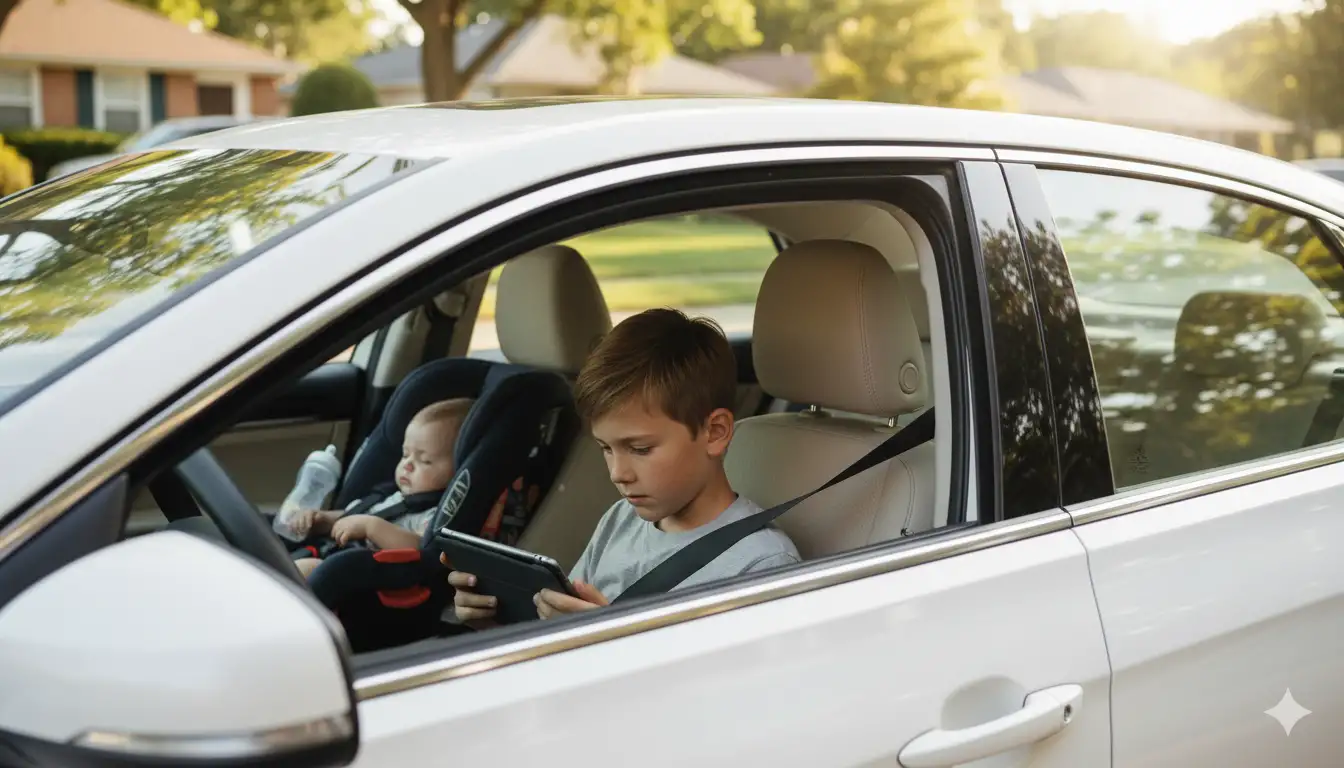
Dangers of Leaving Children Alone in Car
The risks associated with leaving children in vehicles extend far beyond legal consequences. Understanding these dangers helps parents appreciate why laws exist and why experts universally condemn the practice regardless of duration.
Car Interior Temperature Rise Dangers
Vehicle interiors heat rapidly through greenhouse effect, trapping solar radiation even on mild days. Temperatures rise 20°F in just 10 minutes, reaching life-threatening levels before parents complete brief errands[4]. On an 86-degree day, interiors reach 105°F in 10 minutes and 120°F in 20 minutes.
Studies by San Francisco State University demonstrate that 80% of temperature rise occurs within the first 30 minutes[7]. Cracking windows provides negligible cooling effect, reducing temperatures by only 2-3 degrees. Dark-colored vehicles with tinted windows heat even faster, though no configuration remains safe.
Heatstroke Death in Hot Cars Statistics
The statistics are sobering: 1,039 children have died from vehicular heatstroke since 1998, averaging 37 deaths annually[7]. In 2025 alone, 29 children have already died in hot cars as of September, with 52.6% forgotten by caregivers and 23.8% gaining access on their own. These aren’t just summer deaths—fatalities occur year-round, even in moderate climates.
Children’s bodies heat 3-5 times faster than adults, with core temperatures rising rapidly toward the 107°F threshold where death occurs. 54% of victims are under age 2, highlighting vulnerability of infants and toddlers who cannot escape or call for help[7]. Survival often means permanent organ damage, with over 7,500 children experiencing heat-related injuries since 1990.
Risks of Child Kidnapping from Car
Beyond temperature dangers, unattended children face abduction risks that increase with duration and location. Parking lots rank as the third most common location for child abductions, after homes and streets[5]. Predators specifically target vehicles with children, knowing parents will return soon and may have left doors unlocked for “safety.”
Modern vehicles with advanced climate control still don’t eliminate risks. Running vehicles attract thieves who may not initially realize children are inside, leading to dangerous high-speed situations. Even locked vehicles provide little protection against determined criminals with basic tools.
Child Accidentally Moving Car Risks
Children left alone may accidentally shift vehicles out of park, especially in models with electronic shifters or push-button transmissions. Over 100 children annually are injured when unattended vehicles roll, causing crashes, crushing injuries, or drownings when cars roll into water[5]. Modern vehicles like the BMW X3 have complex controls that curious children may activate.
Additional mechanical risks include:
- Power window strangulation (30+ deaths annually)
- Trunk entrapment in older vehicles
- Airbag deployment from tampering
- Emergency brake release
- Ignition or push-button start activation
Leaving Windows Cracked Safety
The persistent myth that cracked windows provide adequate ventilation endangers children nationwide. Research proves cracked windows reduce temperature by only 2-3°F, providing no meaningful protection[4]. This false security leads parents to leave children longer, believing they’ve addressed safety concerns.
Windows cracked enough to provide real ventilation create new dangers—allowing strangers access, enabling escape attempts by toddlers, or permitting rain entry. The aerodynamics of modern vehicles actually reduce airflow through small openings, making cracked windows even less effective than parents assume.
Emergency Response and Good Samaritan Laws
When encountering children alone in vehicles, bystanders face critical decisions about intervention. Understanding legal protections and proper response protocols can save lives while avoiding liability.
What to Do if You See a Child Alone in a Car
Immediate assessment determines appropriate response when discovering unattended children. First, check for signs of distress: crying, sweating, lethargy, or unconsciousness[8]. Note the time, temperature, and vehicle details including license plate. Attempt to locate the parent by having stores make announcements or checking nearby businesses.
Autvex recommends this response sequence:
- Assess child’s condition through window
- Call 911 immediately if distress evident
- Try all doors—many parents leave vehicles unlocked
- Have someone locate parent while you monitor child
- Document everything with photos/video
- Prepare to break window if condition deteriorates
When to Call 911 for Child in Hot Car
Call 911 immediately when children show any distress signs or when temperatures exceed 70°F regardless of apparent condition[8]. Don’t wait to locate parents first—dispatchers can advise while sending help. Provide vehicle location, description, license plate, child’s approximate age, and observed symptoms.
Warning signs requiring immediate 911 response:
- Appearing sleepy or unresponsive
- Flushed, red face
- Heavy sweating or notably dry skin
- Vomiting or drooling
- Rapid breathing or pulse
- Temperature above 80°F outside
- Direct sunlight on vehicle
Good Samaritan Laws Breaking into Hot Car
Most states provide legal immunity for rescuing children from hot cars, though protections vary. 21 states explicitly protect Good Samaritans who break windows to rescue children in immediate danger[1]. These laws typically require attempting to locate owners first and calling 911, though immediate action is protected when danger is apparent.
Legal protections generally require:
- Reasonable belief of immediate danger
- Confirming vehicle is locked
- Attempting to contact law enforcement
- Using minimum force necessary
- Remaining with child until help arrives
- Providing information to authorities
Law Enforcement Removing Child from Car
Police officers have broad authority to remove children from dangerous situations without warrants. Officers can break windows immediately when children appear distressed, without waiting for parental contact[3]. They’re trained to recognize heat stress symptoms and carry window-breaking tools for rapid entry.
Law enforcement response typically includes:
- Immediate medical evaluation
- Child Protective Services notification
- Criminal investigation initiation
- Parent/guardian arrest if warranted
- Emergency custody placement if necessary
- Mandatory court appearances
Legal Immunity for Breaking Car Window to Save Child
Good Samaritan laws provide varying immunity levels for rescuers. Complete civil and criminal immunity exists in states like Florida and Tennessee, while others offer only civil protection[1]. Without specific state protection, general necessity defense may apply when preventing imminent death or serious injury.
To maximize legal protection when breaking windows:
- Target windows farthest from child
- Use proper tools if available
- Clear glass completely before reaching in
- Photograph scene before and after
- Obtain witness contact information
- Cooperate fully with law enforcement
- File detailed reports immediately
Prevention and Safety Systems
Modern technology and behavioral strategies help prevent tragic outcomes, though no system replaces responsible supervision. Understanding available tools and techniques reduces risks of accidentally leaving children in vehicles.
How to Prevent Accidentally Leaving Child in Car
Forgotten baby syndrome affects parents across all demographics, often during routine disruptions or stress. 52.6% of hot car deaths result from caregivers unknowingly leaving children[7]. Creating foolproof reminders and habits prevents these tragedies regardless of how “careful” parents believe themselves to be.
Effective prevention strategies include:
- Look Before You Lock: Check all seats before leaving vehicle
- Backseat reminders: Place phone, purse, or work badge with child
- Daycare communication: Establish check-in procedures for absences
- Visual cues: Keep stuffed animal in carseat, move to front when child present
- Technology assists: Use apps or devices that alert when child remains
- Routine maintenance: Never deviate from drop-off schedules
Car Safety Systems Reminder for Children
Automakers increasingly integrate rear-seat reminder systems as standard equipment. General Motors’ Rear Seat Reminder activates when rear doors open before trips, chiming and displaying messages when engine stops[8]. Hyundai’s Rear Occupant Alert uses ultrasonic sensors detecting movement after locking, honking horns and sending smartphone alerts.
Advanced systems in vehicles like the Audi Q7 include:
- Door sequence monitoring
- Weight sensor activation
- Interior motion detection
- Temperature threshold alerts
- Smartphone connectivity
- Automatic climate control activation
Aftermarket solutions range from $20 chest clips to $200 comprehensive systems. However, Autvex emphasizes these remain backup systems—never rely solely on technology for child safety. Parents must maintain vigilance regardless of vehicle features.
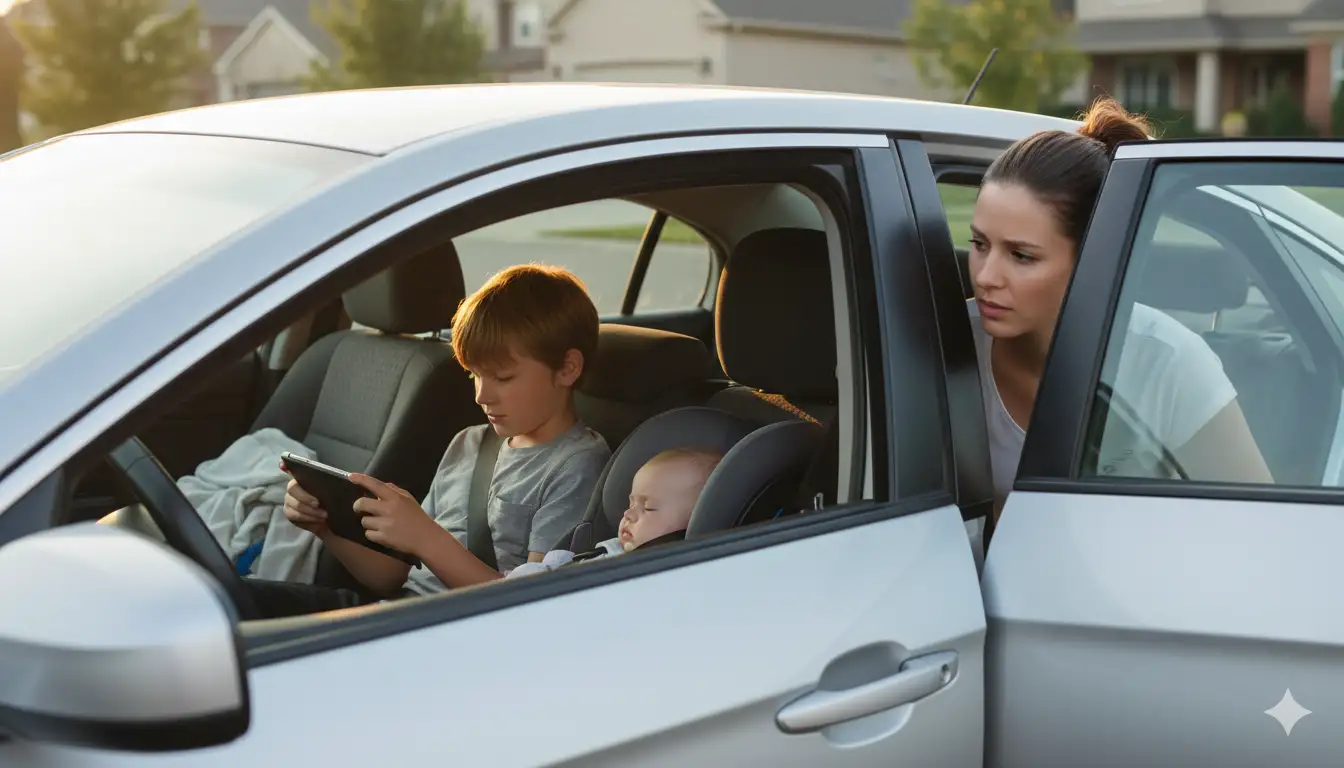
Key Takeaways
- Only 21 states have specific laws about leaving children in cars, but all states can prosecute under endangerment statutes
- Age limits range from under 6 to under 12, with time limits of 5-15 minutes where specified
- 29 children have died in hot cars in 2025, with temperatures rising 20°F in just 10 minutes
- Penalties range from $100 fines to felony charges with potential prison time and custody loss
- 52.6% of deaths result from forgotten children, affecting parents across all demographics
- Good Samaritan laws in 21 states protect those who rescue children from hot cars
- No duration is considered safe—experts unanimously recommend never leaving children alone in vehicles
Decision Path / Next Steps
After understanding these legal and safety implications, implement immediate changes to protect children in your care. Start by establishing non-negotiable rules: children always exit vehicles with you, regardless of errand duration or convenience. This policy eliminates decision-making in stressful moments when judgment may be compromised.
Create multiple reminder systems to prevent accidental abandonment. Place your phone, wallet, or employee badge in the backseat whenever traveling with children. Set smartphone reminders for daycare drop-offs and pick-ups. Communicate with all caregivers about checking vehicles, especially during routine changes or stressful periods. Consider aftermarket safety devices if your vehicle lacks built-in reminders.
Prepare for emergency situations by keeping window-breaking tools accessible and knowing your state’s Good Samaritan protections. Program poison control (1-800-222-1222) and emergency locksmith services into your phone. If you see a child alone in a vehicle, act immediately—your intervention could save a life.
Educate your community about these dangers and laws. Share information with family members, babysitters, and fellow parents. Many tragedies result from misunderstanding risks or assuming “quick” errands are harmless. Support legislation in states lacking specific protections and advocate for manufacturer installation of reminder technology as standard equipment.
For parents who’ve had close calls or struggle with routine management, seek support without shame. Parenting stress affects everyone, and acknowledging vulnerability helps prevent tragedies. Use drive-through services whenever possible, plan errands during school hours, or arrange childcare for necessary solo trips. Remember that major purchases requiring extended time should never include unattended children.
Finally, treat this knowledge as life-saving information worth sharing. Every parent believes they’d never forget their child, yet tragedies occur across all demographics. By maintaining vigilance, utilizing technology, and supporting community awareness, we can work toward eliminating these preventable deaths. Your commitment to never leaving children unattended, regardless of circumstances, could inspire others to adopt similar zero-tolerance policies that save lives.
Frequently Asked Questions
What is the legal age to leave a child alone in a car in my state?
Age limits vary by state, typically ranging from under 6 to under 12 years old[1]. Only 21 states have specific laws, while others use general child endangerment statutes. Check your state’s Department of Child Services for current regulations.
Is it illegal to leave a 10 year old in the car?
In most states with specific laws, 10-year-olds can legally wait briefly, but it’s still risky[2]. Illinois prohibits leaving children under 10 alone, while other states may prosecute based on circumstances regardless of age.
How quickly does a car overheat when a child is inside?
Car temperatures rise 20°F in just 10 minutes[4]. On an 86-degree day, the interior reaches 105°F within 10 minutes and 120°F within 30 minutes, causing potential heatstroke.
What are the penalties for leaving a child unattended in a vehicle?
Penalties range from $100 fines to felony charges with 6+ years imprisonment[6]. Consequences include child endangerment charges, CPS involvement, and potential custody loss depending on circumstances and outcomes.
Can I leave my kids in the car while I run into the gas station?
No, experts strongly advise against leaving children unattended even briefly[5]. Many states prohibit this regardless of duration, and unforeseen delays can turn seconds into dangerous minutes.
Is it ever safe to leave a child in a car?
Safety experts unanimously recommend never leaving children unattended in vehicles[8]. Multiple risks including temperature, abduction, and mechanical dangers make any duration unsafe regardless of precautions taken.
Does leaving the car running prevent heat stroke?
No, running cars still pose risks including carbon monoxide poisoning, theft, and mechanical failures[5]. Air conditioning can fail, children may adjust controls, and running vehicles attract criminals.
Can you be charged with child neglect for leaving a child in a car?
Yes, even states without specific laws can prosecute under child neglect or endangerment statutes[3]. Charges don’t require actual harm, only creating substantial risk to the child’s welfare.
What is the recommended maximum time to leave a child in a car?
Zero minutes—safety experts and law enforcement recommend never leaving children unattended[8]. No duration is considered safe given rapid temperature changes and multiple risk factors.
Does the Good Samaritan law protect me if I break a car window to save a child?
Many states provide legal immunity for breaking windows to rescue children in immediate danger[1]. Protection typically requires calling 911 first and using reasonable force, though laws vary by state.
Should I leave an older sibling (e.g., a 13-year-old) in charge of a younger child in the car?
Most states require supervisors be 12-14 years old minimum, but experts still discourage this practice[2]. Older children may not recognize emergencies or respond appropriately to dangerous situations.
References
- Kids and Car Safety. (2022). Unattended Children in Vehicle State Laws. kidsandcars.org. Retrieved from https://autvex.com/is-it-illegal-to-leave-your-kids-in-the-car
- Safe in the Seat. (2025). Is It Illegal to Leave Your Kids in the Car? safeintheseat.com. Retrieved from https://autvex.com/is-it-illegal-to-leave-your-kids-in-the-car
- Shouse Law Group. (2025). Is it illegal to leave a child in the car unattended? shouselaw.com. Retrieved from https://autvex.com/is-it-illegal-to-leave-your-kids-in-the-car
- National Safety Council. (2025). Hot Car Deaths – Injury Facts. injuryfacts.nsc.org. Retrieved from https://autvex.com/is-it-illegal-to-leave-your-kids-in-the-car
- AP News. (2025). Rising summer heat increases risk of child deaths in hot cars. apnews.com. Retrieved from https://autvex.com/is-it-illegal-to-leave-your-kids-in-the-car
- WKLaw. (2025). What Charges Can You Face for Leaving Your Child in a Car? wklaw.com. Retrieved from https://autvex.com/is-it-illegal-to-leave-your-kids-in-the-car
- NoHeatStroke.org. (2025). Heatstroke Deaths of Children in Vehicles. noheatstroke.org. Retrieved from https://autvex.com/is-it-illegal-to-leave-your-kids-in-the-car
- NHTSA. (2022). Child Heatstroke Prevention: Prevent Hot Car Deaths. nhtsa.gov. Retrieved from https://autvex.com/is-it-illegal-to-leave-your-kids-in-the-car

I am a senior automotive analyst at Autvex. Expert vehicle evaluations, in-depth reviews, and objective analysis helping readers make informed automotive decisions with years of industry experience.

